Hello!
I want to thank you for joining me on this little journey through these various art eras and movements. I will continue to post on #SlayInspireCreate next week but my posts will take a different direction.
Please stay tuned!
All will be revealed in due time!
Thank you to anyone who has taken the time to stop by #SlayInspireCreate!
Memento Vivere!
This week in #SlayInspireCreate we will be looking at some artists from the 20th century.
- Francis Bacon ( 1909 – 1992 )
- Francis Bacon was an Irish – born English painter. He was known for his raw, abstracted figures and portraits. Bacon’s art can be described as brutal, original, bold, aggressive and disturbingly beautiful!
- Themes in Bacon’s work were as follows:
- The Crucifixion: Bacon believed the image of the crucifixion represented ” certain areas of human behavior ” and ” a magnificent armature on which you can hang all types of feeling and sensation. ” It was also a theme that had been used by many old master artists.
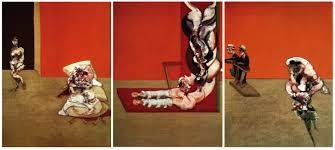
- Popes: Bacon’s figures of popes were distorted and had a nightmarish effect as they screamed silently in the dark.
- In 1650, artist Diego Velazquez painted ” Portrait of Innocent X “. In 1953, Francis Bacon painted ” Study after Velazquez Portrait of Pope Innocent X “. This would be the first of a series of around 50 variants of the original Velazquez.
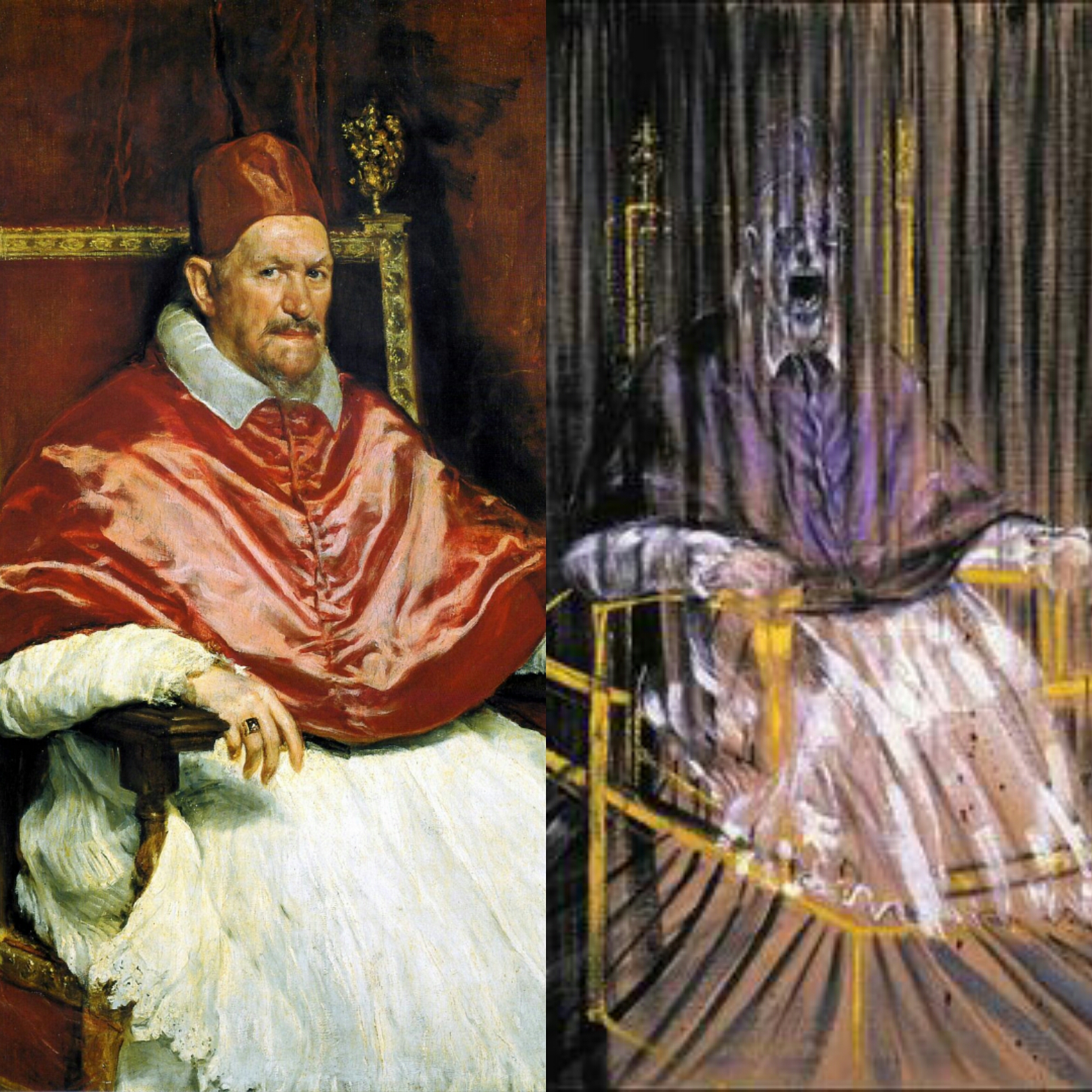
- When asked why he felt the need to revisit Velazquez’s painting so many times, Bacon would say that he had nothing against popes but that it was an excuse to use these particular colors. He also wanted to ” triumph over ” Velazquez!
- Another common theme in Bacon’s work was reclining figures. These colorful abstracted figures were done as single paintings or very often triptychs, ( sets of three associated art pieces intended to be appreciated together ). Many of Bacon’s works were presented as triptychs.
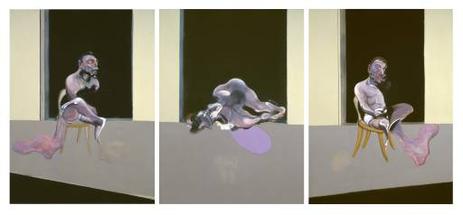
- Bacon never painted from life. He would use many other references such as photographs, movie stills, medical text books and 19th century journals.
- Some other interesting facts about Francis Bacon are:
- He loved artist, Pablo Picasso! Bacon is quoted as saying ” Picasso is the reason why I paint. He is the father figure, who gave me the wish to paint. ”
- In 1937, Bacon was included in a exhibition of ” young British artists “. After the show receiving negative reviews, Francis destroyed all of the works he exhibited! Since his death in 1992, artwork thought to be destroyed from the 50s and 60s has reemerged.
- Francis Bacon met his partner, George Dyer in 1963. George was an apparent London criminal and addict. It like other relationships could be quite turbulent. When George overdosed in 1971, Bacon took it quite hard and there was noticeably darker tone to his work for the rest of his life.
- However in 1974, Bacon met John Edwards with whom he spent the rest of his life with. When Bacon died in 1992, his entire 11m estate was bequeathed to Edwards.
- In 1998, All the contents of Bacon’s London art studio were donated to the Hugh Lane Gallery in Dublin. Francis Bacon’s reconstructed studio has been open to the public since 2001. It contains 570 books, 1,500 photographs, 100 slashed canvases and 70 drawings!
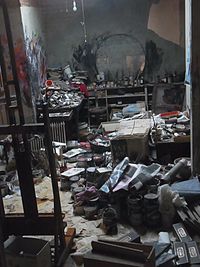
- Louise Josephine Bourgeois. ( 1911- 2010 )
- Louise was a French – American artist who was mainly known for her large scale sculpture and installation art, although she was also a painter and printmaker.
- Louise’s themes included domesticity, family, sexuality, the body, death and the unconscious. Depicting these various themes which coincided with her childhood into her work was therapeutic for Louise.
- Louise’s mother died in 1932 when she was studying mathematics at Sorbonne College in Paris. Her mother’s death inspired her to give up studying math and pursue art.
- During this time Bourgeois took a job leading tours at the Louvre. She graduated from Sorbonne in 1935 and went on to study at other various Academy’s in France as well as learning first hand from artists and assisting with exhibitions.
- Louise married art professor, Robert Goldwater then they both moved to NYC. Their marriage lasted until his death in 1973.
- In 1954, Bourgeois joined the American Abstract Artists Group. During this time she started creating sculptures made of marble, plaster and bronze. They delta with fear, vulnerability and loss of control.
- The emotional impact of her childhood inspired Louise’s work in the late 1960s.
- In the 1970s, Louise was teaching at Pratt Institute, Cooper Union, Brooklyn College and the New York Studio School of Drawing, Painting and Sculpture as well as teaching printmaking and sculpture at the School of Visual Arts in New York.
- Something else that was cool was that Bourgeois would hold art critiques for young student artists at her home! These gathering were called ” Sunday, bloody Sundays because of Louise’s harsh criticism and dry sense of humor.
- Louise also worked with activists, becoming a member of a feminist anti- censorship collective as well as use her artwork to speak up for LGBT equality and AIDS organization ACT UP.
- 1978 – Received commission for first public sculpture.
- 1982 – Received first retrospective at the Museum of Modern Art in NYC.
- 1989 – Received another retrospective at Dcumenta 9 in Kassel, Germany.
- In the 1940s, Louise first started drawing spiders. Creepy crawers to some, spiders represented something more personal to Louise. Bourgeois would explain that spiders reminded her of her mother. ” She was deliberate, clever, patient, soothing, reasonable, dainty, subtle, indispensable, neat, and as useful as a spider, “.
- Louise would go on to say that ” The spider is an ode to my mother. She was my best friend. Like a spider, my mother was a weaver. My family was in the business of a tapestry restoration, and my mother was in charge of the workshop. Like spiders, my mother was very clever. Spiders are friendly presences that eat mosquitoes. We know that mosquitoes spread diseases and are therefore unwanted. So, spiders are helpful and protective, just like my mother. ”
- In the 1990s her drawings would come to life! Louise’s iconic sculptures came in various sizes. Her smallest was a 4 inch brooch while her largest spider was close to 30 ft tall. These incredible sculptures would lead to her nickname, ” Spiderwoman “.
- Louise Bourgeois died on May 31st, 2010. Her last works of art would be completed the week just before her death.
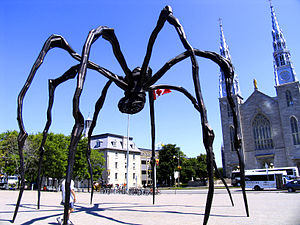
- Amrita Sher- Gil ( 1913 – 1941 )
- Amrita Sher – Gil was a Hungarian – Indian painter. She is often known as the ” Indian Frida Kahlo ” as well as ” one of the greatest avant – garde women artists of the early 20th century “.
- Amrita started painting when she was a child and started receiving art lessons at the age of 8.
- In 1924, her mother who was an opera singer along with an Italian sculptor who she had come to know, took Amrita with them to Italy and enrolled her at Santa Annunziata, an art school in Florence. Amrita did not stay long but was introduced to the works of many Italian masters of art.
- When Amrita was 16, she again traveled with her mother to Europe to train as a painter in Paris. She attended the Academie de la Grande Chaumiere and the Ecole des Beaux -Arts. While there she found inspiration from painters, Paul Cezanne and Paul Gauguin.
- While in Paris, Amrita’s oil painting, ” Young Girls ” won her a gold medal and election as an associate of the Grand Salon. Amrita was the youngest ever member as well as the only Asian to receive this honor.
- Her work in Paris included portraits, nude studies and still life studies.
- In 1933, feeling an intense longing to return to India, Amrita left Paris.
- Over the next several years, Amrita would go on a journey to rediscover her Indian roots and educate herself in the aspects of traditional Indian art.
- From 1937 – 1941 Amrita toured South India, got married to her Hungarian first cousin, Dr. Victor Egan and found what she was searching for in her art.
- Amrita realized that her ” artistic mission ” was to ” express the life of Indian people through her canvas. ” Amrita would go on to say ” I can only paint in India. Europe belongs to Picasso, Matisse, Barque… India belongs only to me “.
- Amrita’s painting’s often depicted poor women and deprived Indian villagers. She had a lot of empathy for them. Amrita also found inspiration with Gandhi’s teachings and lifestyle.
- In 1941, just days before the opening of her first major solo show, Amrita became very ill and slipped into a coma. The reason for her death has never been certain. Although many believed that peritonitis might have been the cause. Amrita’s mother accused her husband Victor of murder.
- ” The day after her death, Britain declared war on Hungary and Victor was sent to jail as a national enemy. “
- Amrita’s work has been declared as a National art treasure for the Government of India. It has become so important that if it is sold in India, it must stay in the country. Less than 10 of her pieces have been sold globally.
- She is an inspiration to many contemporary Indian artists and for me, discovering Amrita and her beautiful work has been like finding a new kindred spirit!
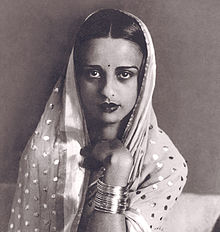
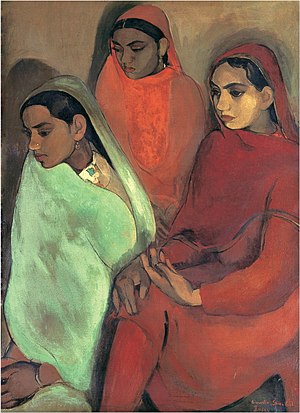
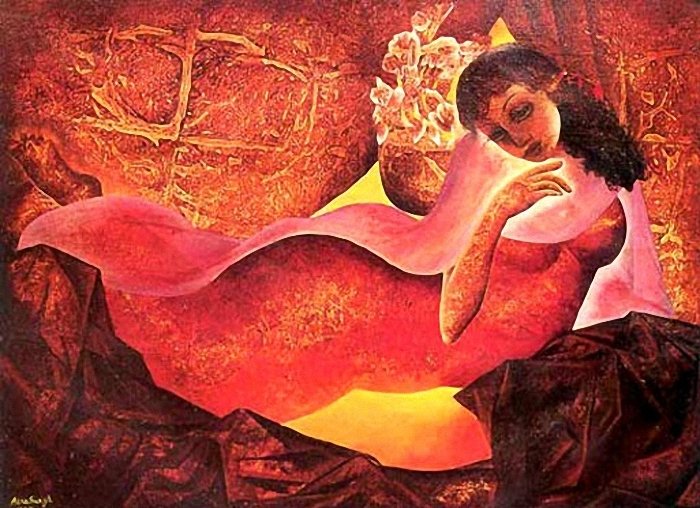
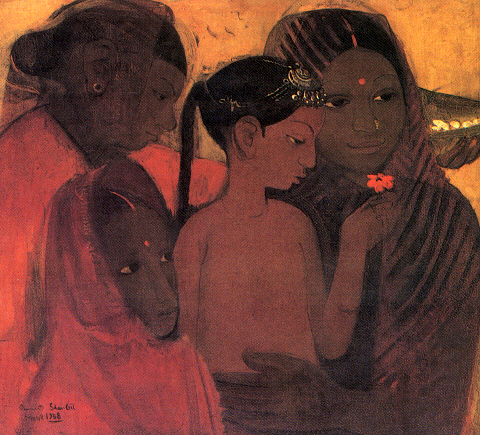
- Margaret D.H. Keane ( Born Peggy Doris Hawkins ) 1927 – present
- Margaret Keane is an American artist known for her paintings of subjects with big eyes. Her subjects consist of children, women and animals.
- When Margaret was two, her eardrum was damaged during an operation. Because she was unable to hear properly, a person’s eyes were very important to her as she would look at them in order to understand them.
- In a 1972 interview on The Mike Douglas Show, Margaret said ” I was always interested in drawing eyes. I used to draw eyes on the margins of my school books.”
- Keane started drawing as a child. She took classes at the Watkins Institute in Nashville and when she was 18, attended the Traphagen School of Design in NYC for a year.
- Margaret started off by painting baby cribs and clothing before she started her career in painting portraits.
- ” Sometime in the mid 1950s, Margaret, married with a child, met Walter Keane. “
- Walter Keane, who also had been married, divorced in 1952, worked as a real estate salesman and painted on the side.
- In 1955, Margaret and Walter got married.
- Apparently, Walter Keane started selling and exhibiting Margaret’s work as his own work immediately. When Margaret figured out what was going on, she remained silent. Margaret would later explain saying, ” I was afraid of him because he [threatened] to have me done in if I said anything. ”
- ” In the 1960s, Keane became one of the most popular and commercially successful artists of the time. ” Although some critics had other opinions about the work. Even artist, Andy Warhol had something to say about the success of Keane saying ” I think what Keane has done is just terrific. It has to be good. If it were bad, so many people wouldn’t like it. ”
- Walter was very good at promoting the “big eyed ” paintings and in so many words would say to Margaret that the paintings were signed by Keane, they were both Keanes so basically they were one in the same.
- While the artwork was being sold under the name of her husband, Margaret was painting continuously for 16 hours a day to keep up with the demand of the paintings.
- In 1970, after Margaret left Walter, she announced on a radio show that she was the real artist of the paintings.
- A ” paint – out ” was set up by a reporter from the San Francisco Examiner. Walter did not show up.
- In 1986, Margaret sued Walter and USA Today for an article claiming that Walter was the actual artist.
- In the Federal court trial, the judge ordered both Margaret and Walter to each ” create a big – eyed painting in the courtroom, to determine who was telling the truth. ”
- Walter, citing a sore shoulder declined to paint. Margaret on the other hand finished her painting within 53min.
- She was awarded 4 million in damages, however in 1990 the award money was overturned. The verdict of defamation was upheld though, which was the most important thing to Margaret.
- Margaret continued to paint subjects with big eyes after establishing that she in fact was the artist but their expressions took on a slightly ” happier, brighter ” style. Margaret describes her subjects who are crying as having ” tears of joy ” or ” tears of happiness “.
- In 1970, Margaret married Honolulu sports writer Dan McGuire. Dan was very helpful in assisting Margaret to move on from her turbulent relationship with Walter.
- In 1991, Keane moved back to California to live with her daughter Jane and son in law Don.
- In 2014, A biographical film entitled ” Big Eyes ” was directed by Tim Burton. Margaret is portrayed by Amy Adams. Walter is played by Christoph Waltz. Margaret Keane makes an appearance in the film.
- In 2017, at the age of 90, Margaret began hospice care.
- Today, you can you can visit her website: www.keane-eyes.com where selected prints are sent to Margaret to sign personally.
- Her gallery is located in San Francisco, California.
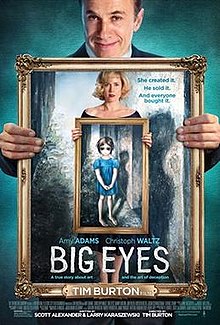
- Andy Warhol ( 1928 – 1987 )
- Andy Warhol ( born Andrew Warhola ) was an American artist, director, and producer. He was an icon in the art movement known as pop art.
- Warhol is known for his eccentric personality and lifestyle and incorporating pop culture into his work.
- ” If you want to know all about Andy Warhol, just look at the surface of my paintings and films and me, and there I am. There’s nothing behind it. ” – Andy Warhol, The East Village Other, 1966
- When Warhol was in the 3rd grade he had Sydenham’s chorea in which he was often confined to his bed. Andy drew, listened to music and collected photos of film stars. He would remember this time as being very important in the development of his ” personality, skill-set and preferences. ”
- Warhol started off his career in commercial and advertising art.
- He drew shoes for Glamour magazine and a shoe designer for shoe manufacturer, Israel Miller.
- Warhol’s ink drawings were part of his first exhibits in NYC.
- In the 1950s Warhol started using silk screen printmaking as a technique for his paintings. He also started exhibiting his work in several galleries including New York City and Los Angeles.
- In the 1960s Warhol started making painting’s of American iconic objects ( Campbell’s Soup Cans, Coca-Cola bottles …) and celebrities.
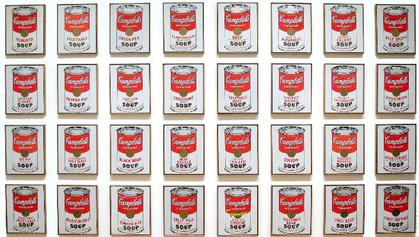
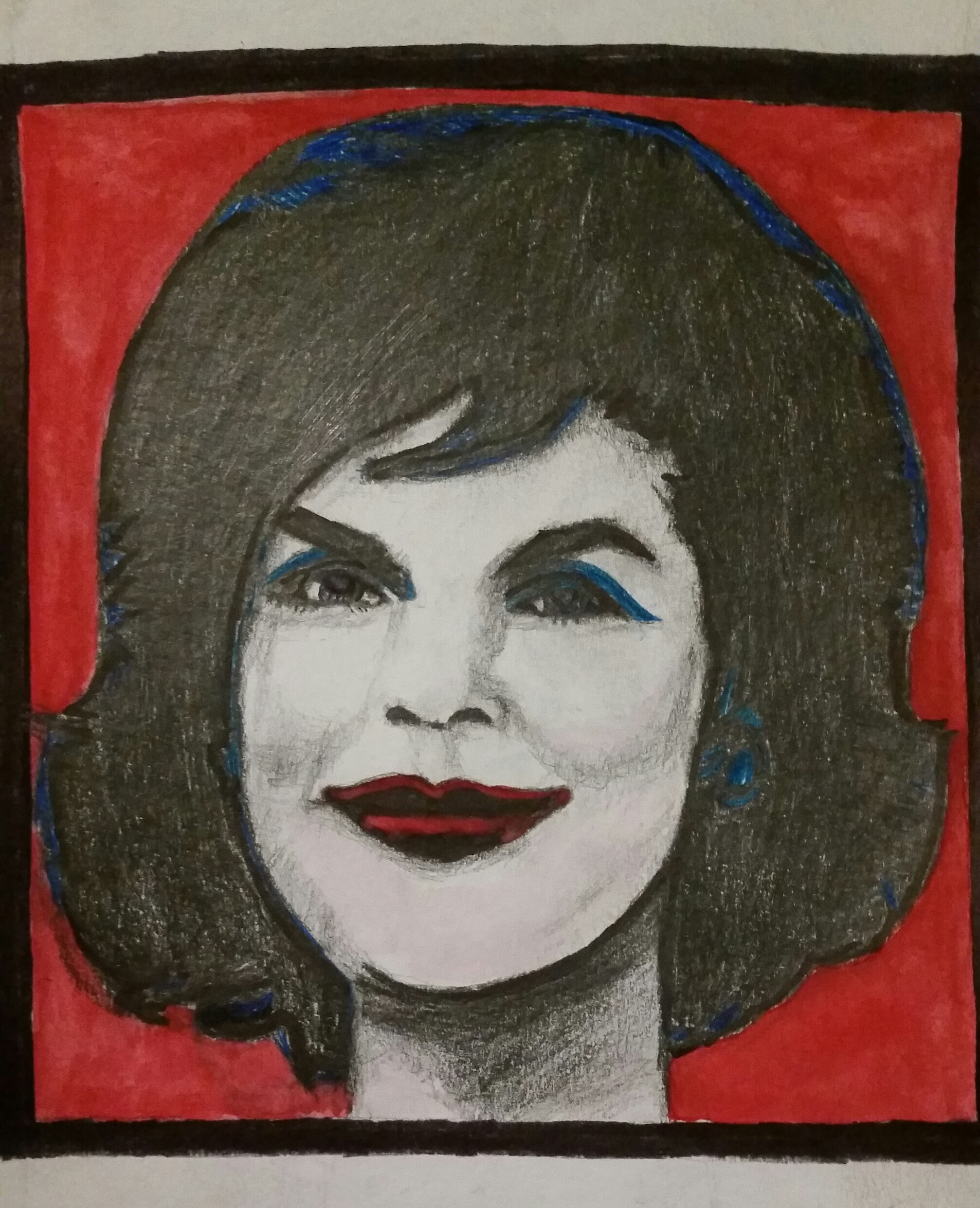
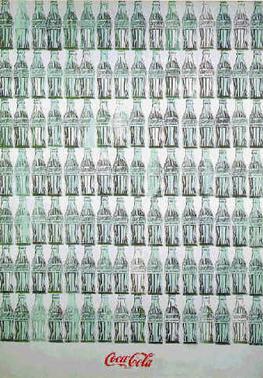
Warhol said this about Coca – Cola. ” What’s great about this country is that America started the tradition where the richest consumers buy essentially the same things as the poorest. You can be watching TV and see Coca-Cola, and you know that President drinks Coca-Cola, Liz Taylor drinks Coca-Cola, and just think, you can drink Coca-Cola, too. A Coke is a Coke and no amount of money can get you a better Coke than the one the bum on the corner is drinking. All the Cokes are the same and all the Cokes are good. Liz Taylor knows it, the President knows it, the bum knows it, and you know it. ”
- It was during this time that Warhol founded his studio, ” The Factory “. Artists, writers, musicians and underground celebrities all hung out at the factory! Everybody came and went as they pleased. Collaboration with the artists who hung out there happened alot. It was because of these ” assistant’s ” that Warhol was able to increase his productivity. The work done at ” the factory ” consisted of paintings, silkscreen, photography and film )
- The Velvet Underground, an American rock band was formed in 1964 by singer/guitarist Lou Reed. It was briefly managed by Andy Warhol. It also was the house band at ” the Factory “.
- On June 3rd, 1968 Andy Warhol’s life would change forever.
- Valerie Solanas, radical feminist writer walked in The Factory shot Warhol three times. She also shot art critic and curator Mario Amaya. Valerie had been at The Factory several times before, appearing in one of Warhol’s film and trying to get him to produce her play.
- Warhol almost died from the injuries he sustained. He suffered physical effects for the rest of his life, having to wear a surgical corset. The event would end up haunting Warhol and had a profound effect on his art.
- After the shooting, security increased. The days of ” The Factory of 60s ” was over!
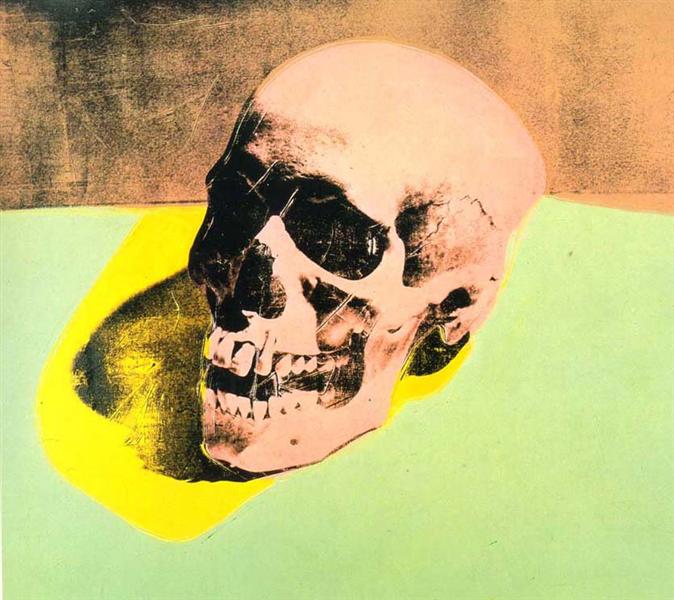
- The 1970s were a quieter decade and were focused on business for Warhol. The shooting had made him much more guarded, fearful a little more odd and a meticulous observer.
- Andy started recording all of his thoughts no matter how mundane they were. He would also record conversation’s he had with other people. He called his tape recorder his ” wife “.
- Warhol’s longest relationship would be with his partner, Jed Johnson who went on to become a leading decorators in New York. They spent 12 years together.
- He was also an avid collector. Warhol collected everything under the sun including 19th century paintings, airplane menus, pizza dough, unpaid invoices and cookie jars.
- One of Warhol’s most prized collection was that of his wigs. He had over 40 wigs. Andy started with mouse brown, moved on to various shades of blond then on to silver grey.
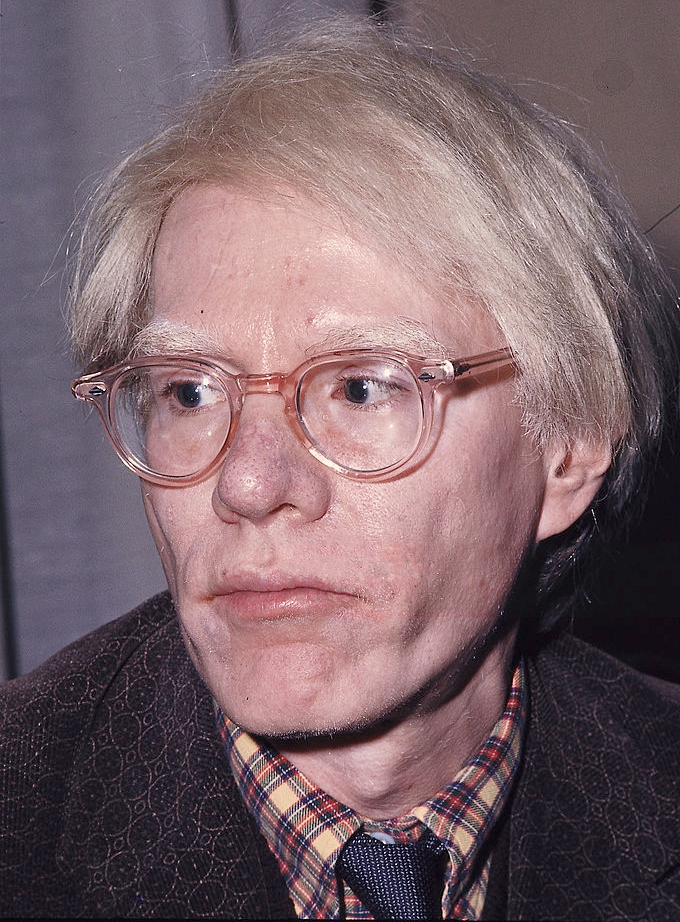
- In the 1980s Warhol had a bit of a rejuvenation due to some new friendships with some prolific artists of the day. One of these artists was Jean – Michel Basquiat. They became very good friends and collaborated on many works of art.
- Andy Warhol died on February 22, 1987 at age 58. Since the shooting, Andy had become very afraid of doctors and hospitals so he never went to get checkups on issues that were bothering him.
- Andy Warhol’s legacy continues to this day. Warhol’s will dictated that his estate fund the Warhol Foundation for the advancement of the visual arts which was created later that year.
- In 1994, The Warhol Museum was opened in Pittsburgh, Pennsylvania. It is the largest museum in North America dedicated to a single artist.
- Jean – Michel Basquiat ( 1960 – 1988 )
- Jean – Michel was an American artist of Haitian and Puerto Rican descent. Basquiat was first known as a graffiti artist then later for his paintings and friendship and collaboration with artist Andy Warhol.
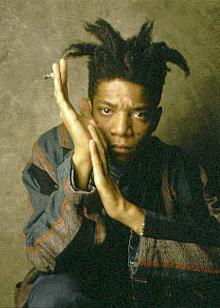
- Basquiat’s mother helped nurture a love for art for him when he was a child by taking him to art museums in Manhattan and enrolling him as a junior member of the Brooklyn Museum of Art.
- Jean was very gifted and learned to read and write by the age of 4 and was fluent in French, Spanish and English by age 11.
- In 1967, Basquiat attended an arts- oriented private school.
- When Jean was hit by a car in 1968 and was recuperating, his mother gave him a copy of Gray’s Anatomy. This would be influential in Basquiat’s art.
- At age 13, Jean’s mother was committed to a mental institution and would spend her life in out of them for the rest of her life.
- Because of this event and family unrest, Basquiat would eventually run away, drop out of school and become homeless. He would support himself by selling T-shirts and homemade post cards.
- 1976 – Basquiat began spray painting graffiti on buildings in Lower Manhattan. His work would be tagged under the name SAMO.
- 1979 – Basquiat formed his band ” Gray “. The band would perform at Max’s Kansas City, CBGB, Hurrah and the Mudd Club.
- In 1980, Basquiat would make a breakthrough as a solo artist.
- Basquiat’s art focused themes such as wealth versus poverty, integration vrs segregation, racism, colonialism, historical references and contemporary critique. Jean would use poetry, drawing and painting
- Basquiat would become close friends with artist, Andy Warhol first meeting him when he sold him his postcard art at a restaurant.
- The two would spend time painting, working out and going to parties. Many thought they were using each other but it was also clear that the two had a special bond, close to that of father and son.
- When Warhol died in 1987, Basquiat took it very hard and struggled to make art. He also went back to a destructive lifestyle that would eventually lead to his early death in 1988 by a drug overdose.
- After Basquiat participated in ” The Times Square Show ” in 1980, he was invited to Italy for his first solo show in 81.
- From 1981 – 1983, Basquiat would go on to have several more shows in NYC, Italy, Germany and California.
- From 1984 – 1985, Basquiat was showing work at the Mary Boone Gallery, collaborative shows with Warhol and was the youngest artist to be included in the Whitney Biennial ( Major International exhibition of contemporary art ).
- On February 10, 1985, Basquiat appeared on the cover of The New York Times Magazine.
- Throughout 1986 to 88, the year of his death, Basquiat struggled with the use of heroin. Many friends, including Warhol tried to help Jean but in the end, his addiction overtook him.
- On August 12, 1988, Jean – Michel Basquiat died of a heroin overdose at his art studio. He was 27 years old.
- At his memorial, artist Keith Haring had this to say about his friend, ” He truly created a lifetime of works in ten years. Greedily, we wonder what else he might have created, what masterpieces we have been cheated out of by his death, but the fact is that he has created enough work to intrigue generations to come. Only now will people begin to understand the magnitude of his contribution “.
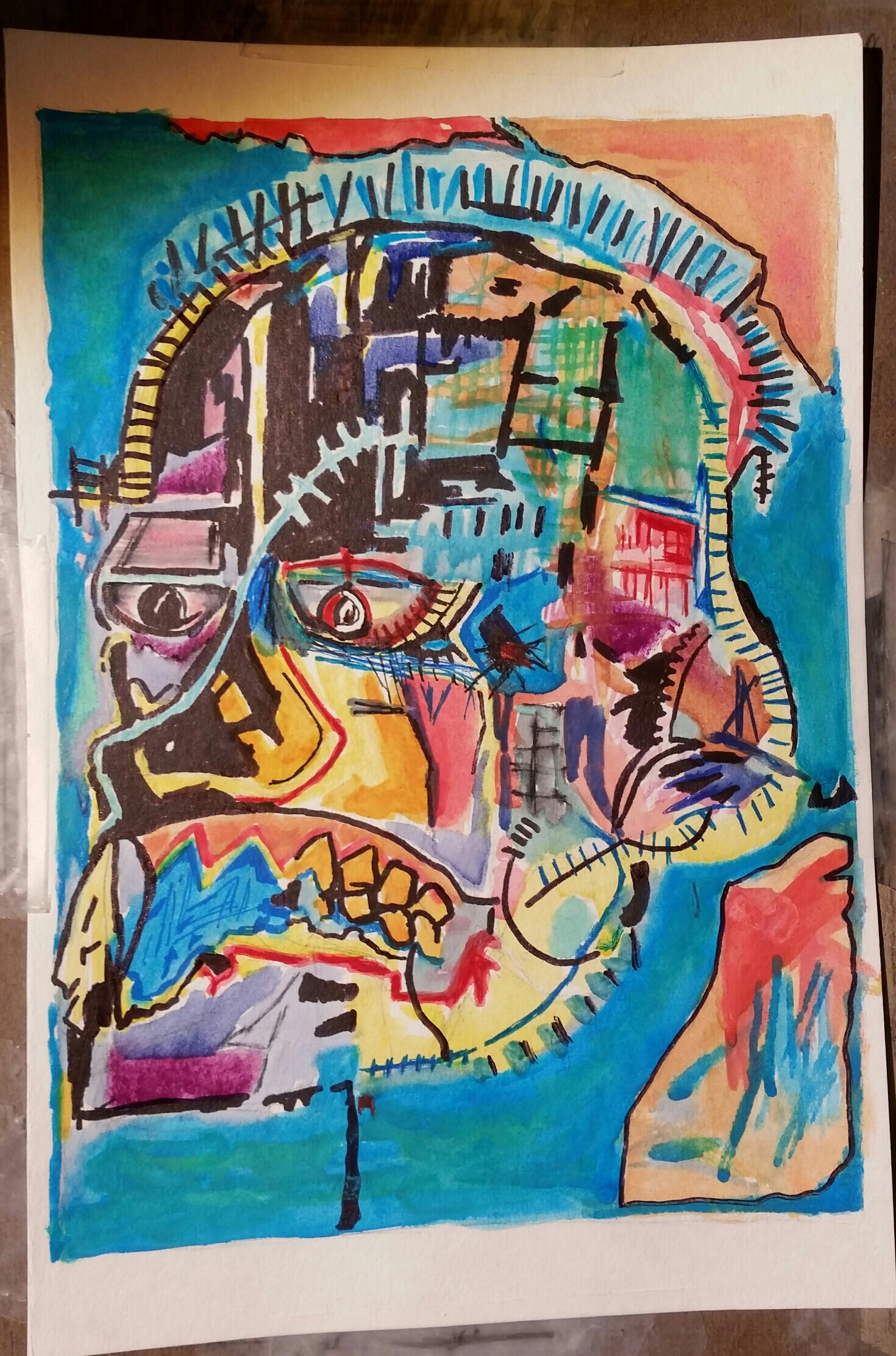
- Thanks for supporting #SlayInspireCreate! See you on Wednesday for awesome links to videos and ebooks on the artists we looked at today!